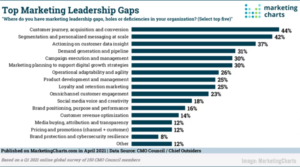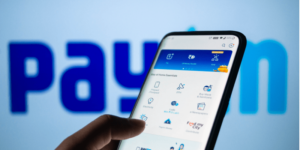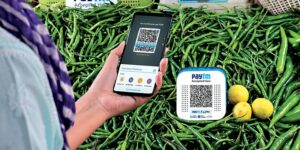How can you take an individual completely unfamiliar with your brand and turn them into a paying customer?
Enter the sales funnel: a theoretical representation of a customer’s journey towards a purchase.
A sales funnel is a crucial part of any successful marketing strategy. The funnel is a multi-layered inverted triangle that offers a visual representation of how people become customers.
The top of the funnel (TOFU) pulls its leads in from a wide range of channels, such as through search engines, blog posts, and social media. Before leading down to the middle of the funnel (MOFU) for the leads that have shown interest, through downloading white papers, reading testimonials, signing up for a free trial, etc. Then finally to the bottom of the funnel (BOFU) for those leads that are ready to make a purchase.
Social media is an integral part of the sales funnel, and the data you can derive from social can provide you with deeper insights into how to improve your funnel over time, leading to more conversions.
So how can you create a social media sales funnel that aligns (and drives leads into) your B2B sales funnel? Here are some key tips to help you integrate social media into your sales funnel.
Quick Jump Links:
Defining the Social Sales Funnel: 3 Core Steps
While many brands create their own social media marketing funnel to maximize growth, the most successful sales tactics will have integration between both sales and marketing, covering the full process of nurturing a lead, to converting that lead into a customer.
Traditionally, social media appears at the TOFU, focusing on brand awareness and generating that initial interest. But your social media data is a gold mine for lead generation. By harnessing the power of your data into your sales funnel you can increase your prospects and convert more leads.
Social media has applications at all stages of the funnel: brand awareness, considerations, and conversion.
Step 1: Brand Awareness
Every social network out there can be used to get a brand in front of a new audience and make them aware of their products and services.
You can promote content across social platforms in the form of blogs, videos, audio content, etc., engage with your audience, put out paid ads, or share exciting company news. Whether with organic posts or paid ads, social media can get a brand’s content in front of a targeted audience and increase its reach.
Step 2: Consideration
This part of the social media funnel refers to the decision-making process. Social media can influence purchase decisions in many ways, by offering social proof assets like testimonials and reviews that can be shared to engage your social audience. Time-limited offers can also be pushed on social media to ignite a sense of urgency, turning potential customers into paying customers.
During the consideration stage, focus on value-adds:
- What does your brand do better than any other brand on the market?
- What value do you uniquely add?
How does that value-add translate to social media? Focus on downloadables, templates, competitor alternatives, and buying guides. Your customers are thinking of making a purchase, and you want to make sure you’re presenting your brand as the best option out there.
Step 3: Conversion
This is the end of the social media marketing funnel when someone has decided to become a customer, which may or may not be as simple as completing an online purchase. They have become aware of your brand, considered the possibility of a purchase, and now you can close the sale.
However, something to keep in mind is that the funnel doesn’t stop after the conversion stage. In B2B especially, customers are likely to be on a retainer or may make regular purchases.
As a result, there needs to be continuous influence from the brand so that recurring customers continue to make these purchases and don’t stray toward competitors. This means marketing to get them to the bottom of the funnel again, as they constantly loop between consideration and conversion each time their purchase is up for renewal.
At the end of the day, people buy from people. In this step of the sales funnel, social selling will be key in getting many potential customers over the finish line. Your account executives and sales team can develop relationships with your prospects, and thought leadership will play a crucial role in establishing your sales team as experts in the industry.
This is sometimes added as an extra step to the marketing funnel, in the form of engagement, so you can continue to nurture those customer relationships and make them a part of your brand community.
How Social Media Integrates into the Sales Funnel
For many marketers, social media sits exclusively at the top of their B2B marketing funnel, as a channel used to initially draw in potential customers through awareness and branding, but not used to directly help with a sale.
But as social media is a key channel for connecting with prospects and collecting data on potential customers, it can fit into each stage of the sales funnel. By analyzing the data, you can discover what your brand must do to influence customers at every stage of the funnel, from the initial stages when they first learn about your brand, to the purchasing stage and on to when they become true advocates for your brand.
If social media forms a significant part of your overall marketing strategy, then you’ll be able to incorporate it into each stage of the funnel. When each stage works towards a specific goal, the customer journey will go much smoother, and you’ll be able to build that trust and relationship with your brand.

Let’s look at what kinds of content can be promoted on social media at each stage of the sales funnel.
TOFU content for your social sales funnel
- Brand videos
- Blog posts
- ebooks
- Paid ads
- Infographics
At the top of the funnel, you’re focusing on awareness. Your customer can’t buy from you if they don’t know you exist.
TOFU content is focused on information—how does your customer need to be educated? It’s important to use this informational content to educate and add value to your customer. If your social accounts are great to follow because there is tons of information about a particular topic, your brand will be a go-to association for a customer when they have needs.
For example, if you offer email marketing services, your TOFU social content will likely be guided around implementing email marketing for the first time, creating a great drip campaign, how to set up automation, etc.
Get into your customer’s brain: What is it they would be looking for? What kind of content would best speak to their needs? When you figure that out, TOFU content is easy to share across your socials.
MOFU content that starts to familiarize your customer with your brand
- Case studies
- Webinars
- Resources
- Retargeting ads
When focusing on middle-of-the-funnel content to share on social, adding value is going to be your biggest goal. Your customers have been informed about your brand, they know you a little, but now it’s time to make sure they can’t live without you.
In this part of the funnel, your customer is thinking about purchasing. It’s important to make the decision easy for them: equip them with webinars that teach them how to fix the problem your brand solves (and how easy it becomes with your brand). Offer up resources like guides, templates, and other value-adds that they can use to get started quickly. Highlight the benefits and value proposition that your brand offers.
The key here is a sign of intent: when a potential customer is showing intent, they’re doing certain things, like looking at your pricing page if you have one, or perhaps looking at your demo page. Perhaps they signed up for one of the webinars you promoted on LinkedIn, or they’ve downloaded one of your handy whitepapers. At this point, you can begin incorporating social and search retargeting ads to keep your brand top-of-mind.
BOFU content that gets a prospect over the finish line
- Demos
- Events
- Limited time offers
- Buying guides
Bottom-of-the-funnel content can often be the trickiest to promote, as it requires not only intent from a potential customer, but also initiative.
But, you can still promote your BOFU content: purchasing guides, limited offers and discounts, and events can go a long way to helping pull a potential customer into a purchase. Combine this with a bit of social selling from your sales team, and you’ve got a solid BOFU social strategy.
Delivering the right kind of social media content at each stage of the sales funnel is essential for effective lead nurturing. But when you use the data, you can make incremental changes to your campaigns over time to improve your conversion rate.
How to Use Social Data Throughout Your Sales Funnel
Social media provides a wealth of data points that can determine how well your content is doing with your audience, and where potential leads are coming from. Everything from likes and comments, shares, mentions, and followers can be mined for useful data.
But it’s important not to worry too much about the raw numbers, because even if you have a million followers, it doesn’t mean anything if they’re not translating into sales. When you have tracking enabled across your social platforms, whether on the platform itself or through a social media management platform, you can keep tabs on whether your followers are converting.

From the funnel perspective, different kinds of social media metrics can be used at each stage of the buyer journey, such as:
TOFU metrics to measure awareness
- Followers
- Views
- Reach
- Likes
- Share of Voice
In this stage, your goal is brand awareness. What you’re looking for is people to see you—so metrics like followers, likes, views (on video), and to a lesser extent, reach, are going to be the KPIs that matter.
Another key metric in determining brand awareness can be found through social listening: share of voice. Share of voice shows you how present your brand is in the conversations that happen in your industry. This means that if a potential or current customer is discussing solutions to choose, share of voice tells you how far your brand reaches.
How to use these metrics for TOFU:
- Measure follower/like growth over time to see if your content is resonating with potential customers
- Track share of voice to see how you measure up to your competition
- Follow video views to do a health-check of your video content
MOFU metrics to measure engagement
- Comments
- Link Clicks
- Shares
- Discos
- Opps
MOFU metrics are focusing on intent: Are your potential customers clicking links? Are they leaving comments, sharing your content, or even downloading different resources you’ve provided?
When potential customers are completing these actions, they’re showing a little intent. They’re considering purchasing with your brand and are looking for more information.
A great social media management platform will be able to sync with your CRM and provide minute detail about who your customer is, and where they are in their level of intent. It’ll be able to track social engagement and connect which contact in your CRM was engaging with which social post.
How to use these metrics for MOFU:
- Engagement, like comments, shares, and link clicks, are signs of intent that you can use to inform your MOFU content strategy
- Discos and opportunities can be connected back both to potential customers and which content drove them to sign up
BOFU metrics to track revenue impact
Collecting and analyzing this data is the best way to gain an understanding of your interactions with followers and potential new customers, providing insight into how you can improve your services, messaging, and overall marketing strategy.
When you have these detailed insights into every person who reaches out to your brand on social media, you can track and manage each of these inquiries in the same way you might respond to emails. The data also allows you to segment potential customers and create specific campaigns that focus on highly targeted groups of people. The more targeted a campaign, the higher your conversion rate will be.
When you have access to all the data you can draw from your social media profiles, you can discover where your leads are coming from and attribute them to specific social campaigns, posts, and social profiles. It’s a great opportunity to better understand your customer’s needs, start meaningful conversations, and close deals.
How to use these metrics for BOFU:
- Send relevant leads with engagement history to the sales team
- Start conversations with different prospects based on what content has interested them
Key Takeaways
When you integrate your social media data into your sales funnel, you can get a clear picture of which networks are contributing the most to your lead generation, what kind of social posts are converting, and at which point your audience is the most engaged.
By tracking lead conversions, you can align your social media marketing efforts with tangible business outcomes. You’ll get a clearer picture of the entire buyer journey from that first interaction with a social post to the point they converted into a customer. With this raw data and statistical insights, you’ll know exactly how to position your campaign and adjust where you invest your resources.










